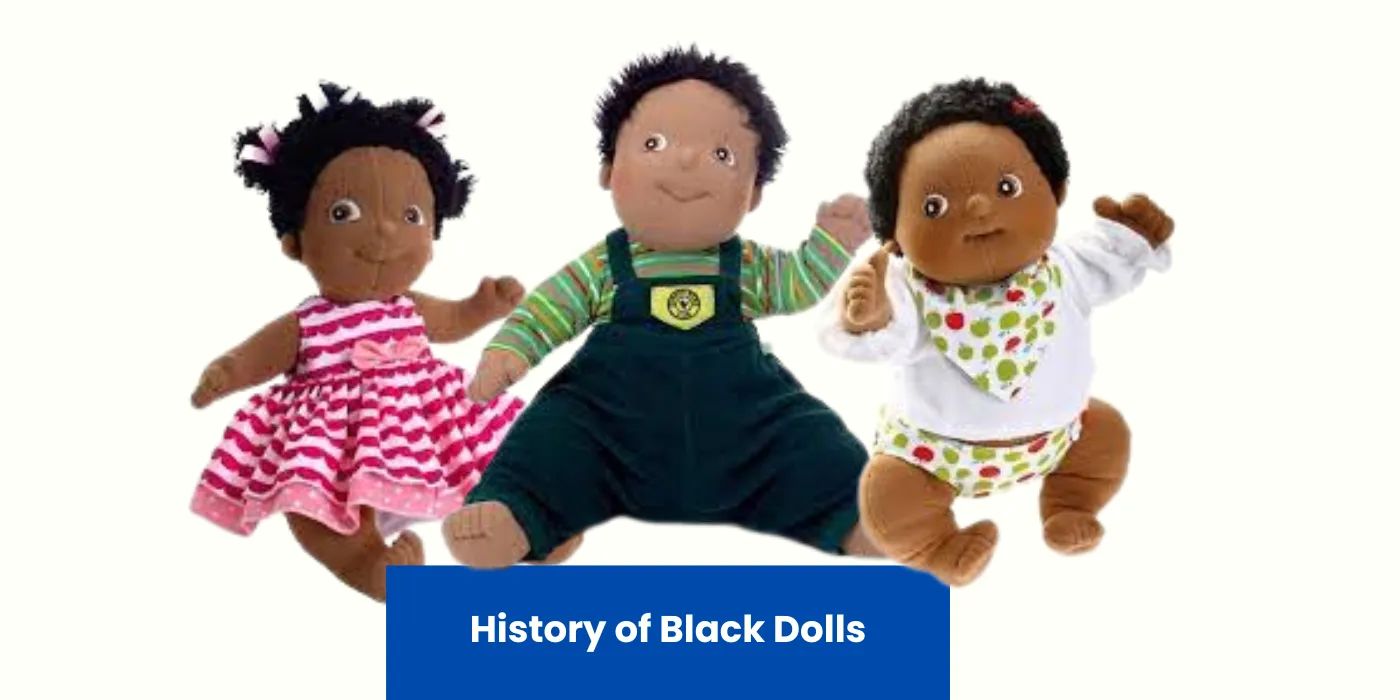We live in a world that strives for and prides in inclusivity. Therefore, it is uncommon to walk into a store and miss a black doll on the shelves. If you don’t want to go to a store, you can always order one online from the comfort of your home. At Baba me, we’ve found a selection of beautiful black dolls that your kid will love to add to their collection.
Black dolls have come a long way. Behind the cute black dolls of today is a long story of overcoming obstacles of racial stereotypes and prejudice. These dolls have a history that dates back to the mid-19th century when the first manufactured dolls were produced in France and Germany. Dolls from these countries were predominantly made from porcelain and bisque and imposed the “white European ideal of beauty.”
Occasional black dolls would pop up, but these, like all other porcelain dolls, were expensive and widely viewed as luxury items. They were also what could be described as odd; a German manufacturer made a three-faced doll, with one of the faces a crying black child, and the other two happy white faces. The French company made mixed-race and black dolls with bisque heads.
These European dolls were expensive, and most of the black families could not afford them. The families stuck to making dolls for their children by hand, which had been the norm for centuries. Nonetheless, change was happening; but on the other side of the world.
In the early 1900s in the United States of America, black dolls that were even close to affordable started appearing. This is because American companies had begun to include black dolls in their line. But even these cheaper celluloid and rubber dolls were produced by white manufacturers. As a result, they often pushed forward racist stereotypes of the black population like the mammy doll stereotype.
Also, the dolls that were not stereotypical were often white blonde dolls dyed black. Therefore, it was pretty hard to find ethnically correct dolls since most of them were just brown or black versions of a white doll. In 1947 when Jackie Ormes, the first African American cartoonist, created the Patty-Jo doll to break the stereotypes. It was a realistic black doll based on her cartoon panel, Patty-Jo ‘n Ginger.
In 1955 in the UK, the Pedigree of England made the Walking African Girl; a beautiful black doll with short curly African hair. But real change in the industry was about to happen in America.
Whereas franchises like Barbie helped push the cause by introducing black dolls, it was a toy company called Shindana (Swahili for compete) Toys that made the most significant impact. Shindana was a division of Operation Bootstrap, launched by Mattel in the Watts Riots’ aftermath in LA.
The toy company was the first to release dolls with ethnically correct black features regularly, from facial features to hairstyles and hair types. The dolls also had African names, like Malaika, Tamu, and Baby Zuri. Around the same time, another African American Entrepreneur called Beatrice Wright Brewington founded a company to mass-produce ethnically correct black dolls.
Thanks to the efforts of Shindana Toys and B. Wright Toy Company, the toy industry was changed forever. They inspired other Black Toys companies to come up, and more companies started making black dolls with ethnically correct features. Over time, black dolls became more common, and the industry matured to what we have today.
Small soft toys for babies come in many different shapes and sizes. They are a great way to soothe your baby and help them get to sleep or calm down when they’re feeling fussy.
Next Up: Should a 12-Year-Old Play With Dolls




